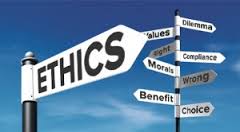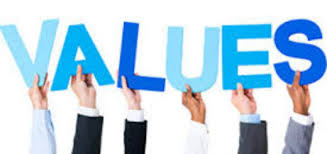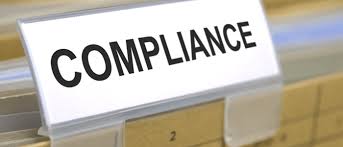Defining Compliance 2.0: The Board (Part 1 of 5)
 This week I am devoting five postings to defining the “new” model of ethics and compliance – Compliance 2.0.
This week I am devoting five postings to defining the “new” model of ethics and compliance – Compliance 2.0.
If you read through compliance writings, blogs, articles, white papers, and other sources, you will see the term “Compliance 2.0” bandied about. It is a term that has yet to be defined but is taking on a life of its own – a reflection perhaps of the growing and continuing momentum behind the ethics and compliance function.
This series is an attempt to put some meat on the bones (yes, just after Thanksgiving) and advance the discussion around the new model for ethics and compliance.
In the last three years, compliance has been at a “standstill” in terms of defining the elements of an effective ethics and compliance program. The Justice Department and SEC’s FCPA Guidance was a watershed event in defining an effective ethics and compliance program, along with the UK Bribery Act’s adequate procedures, and continuing work from the OECD and other non-profit organizations. But in the end, it was DOJ and the SEC that have moved the compliance function to a new era, fueled by aggressive enforcement actions and political pressure to provide guidance to the business community.
Three years can be a long time in the compliance arena, and the compliance profession needs to demonstrate forward-thinking approaches to ethics and compliance. In addition, the compliance profession needs to adopt and adhere to a set of professional standards. This is another challenge for the compliance profession and one that has to be addressed.
Many important battles have been “won” or are in the process of being “won”, along the way. The 2010 Sentencing Guidelines amendments added the important concept of “ethics” to standards for an “effective” compliance program. Ethics is a single and powerful word. A second, and equally important victory, was the separation and independence of the compliance function from the legal department. The empowerment of an independent CCO is – and will be – the most significant change in the corporate governance landscape, far eclipsing Sarbanes-Oxley and redefinition of audit requirements.
We turn now to compliance 2.0 – a new model that builds on these important victories but extends into new responsibilities and requirements for an effective ethics and compliance function. As always, we start with the top of every corporation – the board of directors.
The concept of tone at the top, as defined, is a limiting concept. In Compliance 2.0, compliance professionals are raising the bar for every compliance actor to ensure and promote a culture of ethics and compliance. The board is the preeminent force, by definition, that can push ethics and compliance as an important objective for every company.
The key issue for the board is to define specific obligations for a corporate board and then hold them accountable. The chairperson of the board and the relevant committee, typically the audit committee, has to embrace this new model.
An essential initial requirement is to train the board (either by the CCO or an outside consultant) on the proper means by which the board is to exercise its oversight and monitoring function. No longer is the board’s oversight process going to be subject to haphazard actions, or fits and starts, but a specific and detailed training program has to be conducted to embed a new way of thinking about ethics and compliance.
This new strategy involves a greater focus on oversight of company culture, regular reporting on important compliance functions, and elevation of the compliance function to a C-Suite position as an important partner to the senior leadership team.
A board has to be educated on how to exercise its oversight responsibilities, what information it needs to review to ensure proper culture and compliance functions, and direction as to overall strategy and tools to use in implementing an effective culture of ethics.
 Compliance 2.0 board members will develop, as needed, a strong working relationship with the CCO and critical compliance functions. A regular and robust reporting function, with proper personal reporting time, executive sessions, and commitment to compliance oversight is an important aspect of the new Compliance 2.0 model.
Compliance 2.0 board members will develop, as needed, a strong working relationship with the CCO and critical compliance functions. A regular and robust reporting function, with proper personal reporting time, executive sessions, and commitment to compliance oversight is an important aspect of the new Compliance 2.0 model.
The board, like other components of the compliance function, has to lead by example, and one sure way to do so is through communications of expectations and accountability. Board members have to ensure that compliance functions are regularly communicating with each other and with managers, employees and business partners.
The new era for corporate governance will be defined by development of innovative techniques for oversight and monitoring functions. No longer will the board be passive when it comes to exercising its fiduciary duties — a new era of compliance activism by corporate board members is growing and will soon take precedence in the board room over old ways of so-called corporate leadership.
















1 Response
[…] Source: blog.volkovlaw.com […]